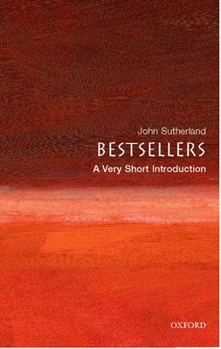Bestsellers: A Very Short Introduction (Very Short Introductions)
(Part of the Very Short Introductions (#170) Series and Oxford's Very Short Introductions series Series)
Select Format
Select Condition 
Book Overview
Lady Chatterley's Lover. The Blue Lagoon. Portnoy's Complaint. The Da Vinci Code. For the last century, the tastes and preferences of the common reader have been reflected in the American and British bestseller lists, and this Very Short Introduction takes an engaging look through the lists to reveal what we have been reading--and why. John Sutherland shows that bestseller lists monitor one of the strongest pulses in modern literature and are therefore worthy of serious study. Exploring the relationship between bestsellers and the fashions, ideologies, and cultural concerns of the day, the book includes short case-studies and lively summaries of bestsellers through the years: from In His Steps--now almost totally forgotten, but the biggest all-time bestseller between 1895 and 1945--to Gone with the Wind, The Andromeda Strain, and The Da Vinci Code. Discussing both classic and contemporary novels, alongside some surprising titles and long-forgotten names. Sutherland lifts the lid on the bestseller industry, revealing what makes a book into a bestseller and what separates bestsellers from canonical fiction.
Format:Paperback
Language:English
ISBN:0199214891
ISBN13:9780199214891
Release Date:December 2007
Publisher:Oxford University Press
Length:144 Pages
Weight:0.30 lbs.
Dimensions:0.3" x 4.5" x 6.9"














